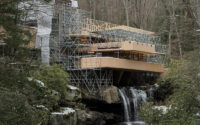- Home
- Articles
- Architectural Portfolio
- Architectral Presentation
- Inspirational Stories
- Architecture News
- Visualization
- BIM Industry
- Facade Design
- Parametric Design
- Career
- Landscape Architecture
- Construction
- Artificial Intelligence
- Sketching
- Design Softwares
- Diagrams
- Writing
- Architectural Tips
- Sustainability
- Courses
- Concept
- Technology
- History & Heritage
- Future of Architecture
- Guides & How-To
- Art & Culture
- Projects
- Interior Design
- Competitions
- Jobs
- Store
- Tools
- More
- Home
- Articles
- Architectural Portfolio
- Architectral Presentation
- Inspirational Stories
- Architecture News
- Visualization
- BIM Industry
- Facade Design
- Parametric Design
- Career
- Landscape Architecture
- Construction
- Artificial Intelligence
- Sketching
- Design Softwares
- Diagrams
- Writing
- Architectural Tips
- Sustainability
- Courses
- Concept
- Technology
- History & Heritage
- Future of Architecture
- Guides & How-To
- Art & Culture
- Projects
- Interior Design
- Competitions
- Jobs
- Store
- Tools
- More
Smart Sensing, Smarter Structures: Lessons Architects Can Borrow from Concrete Tech

Architecture is often described as the marriage of art and science. On one side, there is the vision of form, light, and space. On the other, there is the precision of materials and structural integrity. For centuries, architects have relied on builders and engineers to translate drawings into stable, safe structures. Today, that balance is evolving as technology creates a more direct connection between design and performance.
The use of concrete sensors is a prime example. These embedded tools provide real-time feedback on curing progress and structural strength. They allow construction teams to make smarter, faster decisions while keeping projects on track. For architects, the implications go beyond the technical. These insights can encourage a new way of thinking about materials, timelines, and even design flexibility.
Table of Contents
ToggleWhy Concrete Tech Matters to Architects
Concrete is one of the most widely used building materials in the world. Its durability and versatility make it central to projects from homes to high-rises. Yet its behavior has always carried an element of uncertainty. Temperature, moisture, and curing conditions affect how quickly it gains strength. Traditionally, this has been monitored with manual testing, which slows down progress and adds guesswork.
When sensors offer live updates, that uncertainty begins to shrink. Instead of waiting days for lab reports, teams can adapt schedules in real time. This has ripple effects on design choices. If a floor slab can safely bear weight earlier than expected, other trades can move forward sooner. This efficiency ultimately supports architectural visions by reducing delays and costs.

Data as a Design Tool
Architects are increasingly comfortable using data in areas like energy modeling, daylight simulations, and occupancy analytics. Extending that mindset to materials is a natural step. Real-time data from concrete creates a clearer picture of how a building is evolving during construction.
This visibility can shift the role of the architect. Instead of seeing the construction phase as a handoff, they can stay engaged with how their designs perform under real-world conditions. For example, understanding the curing profile of a large structural element might inform decisions about facade attachment or sequencing of interior work. It becomes less about abstract planning and more about responsive adaptation.
Parallels to Responsive Design
Designers often experiment with interactive architecture—facades that adjust to light, interiors that respond to movement, or systems that change with temperature. Concrete sensors bring a similar concept to the unseen backbone of a building. They give material a “voice,” letting it tell the team when it is strong, when it is vulnerable, and how it is adapting to its environment.
This parallel is inspiring for studio work. It suggests that even traditional materials can behave in dynamic ways if paired with technology. An architect thinking about flexible, adaptive structures can find lessons in how builders already use sensors to guide construction decisions.
Practical Lessons Architects Can Apply
There are several takeaways architects can borrow from these technologies, even if they are not the ones placing sensors on site:
- Value of real-time feedback: Just as builders adjust schedules based on curing data, architects can design workflows that allow for fast adjustments when conditions change.
- Integration of hidden systems: Much like sensors tucked into concrete, architects can integrate subtle technologies into designs that enhance performance without altering aesthetics.
- Collaboration through shared data: Data is not just for engineers. When shared openly, it supports a more cohesive dialogue between the entire project team.
These lessons highlight a shift from static planning to ongoing adaptation, a mindset increasingly relevant in contemporary practice.
Designing with the Invisible in Mind
Architecture is often about what can be seen: proportions, textures, and lines. Yet some of the most critical aspects of design remain invisible. Airflow, acoustics, and structural performance all happen beyond the eye. Concrete monitoring technology reinforces this reality. It reminds architects that paying attention to the unseen can lead to stronger outcomes.
For instance, a design that anticipates quicker construction cycles might allow for phased occupancy or reduced disruption in urban settings. On the other hand, data showing slower curing might prompt a rethink of scheduling or sequencing. These invisible insights shape tangible results.
Building More Sustainably
Sustainability has become a central theme in design. Efficient use of resources, reduced waste, and better performance all matter. Real-time concrete monitoring supports this by helping builders avoid unnecessary tests, wasted pours, or extended delays. Less waste and more efficiency align with the values many architects bring to their projects.

For architects, embracing data-informed approaches is another way to contribute to sustainability goals. It is not about changing design philosophy but about using better information to achieve it.
Looking Ahead
The rise of smart materials and connected technologies will only accelerate. Architects who recognize this shift early can position themselves at the forefront of innovative practice. It does not mean every designer needs to become a sensor expert. Instead, it means embracing a mindset that values responsiveness, integration, and data-informed decision-making.
The lesson is clear: architecture is no longer just about creating drawings that lead to construction. It is about engaging with the living, changing processes that bring buildings to life. Smart sensing is one of the clearest signals of this evolution.
Conclusion
Concrete sensors may sound like a niche construction tool, but they represent a much larger idea. When materials can communicate, projects become more efficient, resilient, and aligned with design goals. For architects, the opportunity lies in seeing these tools not as hidden site gadgets but as a source of inspiration. They show how technology can reveal the unseen, improve collaboration, and encourage a design process that adapts as buildings take shape.
As technology reshapes construction, it will continue to reshape design thinking. Architects who listen to what materials have to say—literally and figuratively—are better equipped to design smarter, more responsive structures.
illustrarch is your daily dose of architecture. Leading community designed for all lovers of illustration and #drawing.
Submit your architectural projects
Follow these steps for submission your project. Submission FormLatest Posts
Best LED Shop Lights 2026: Brightest Options for Garage & Workshop
In 2026, LED shop lights have become essential for creating safe, efficient,...
Coloring Your Year: Using Traditional Lunar New Year Hues to Transform Your Apartment Décor
Lunar New Year always brings a burst of color and energy, making...
Chandelier Light vs Ceiling Lights: Which Decorative Lighting Works Best for UAE Homes in Winter?
Winter in the UAE doesn’t arrive loudly. It doesn’t announce itself with...
Marketing for Architects: How Firms Are Getting More Clients Without Chasing Leads
Architectural marketing has changed in important ways. Referrals and reputation still matter,...












Leave a comment